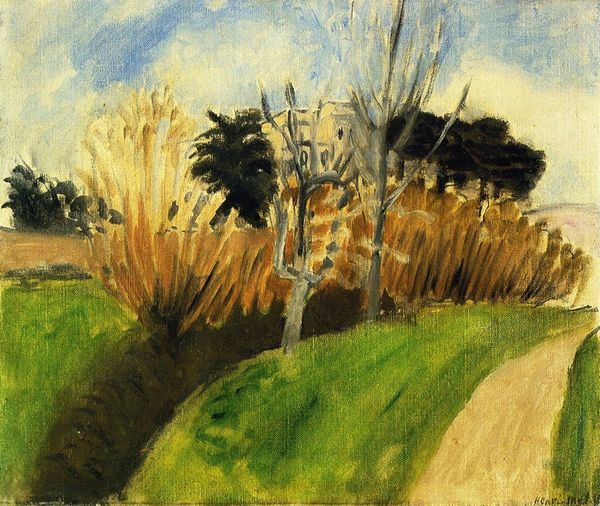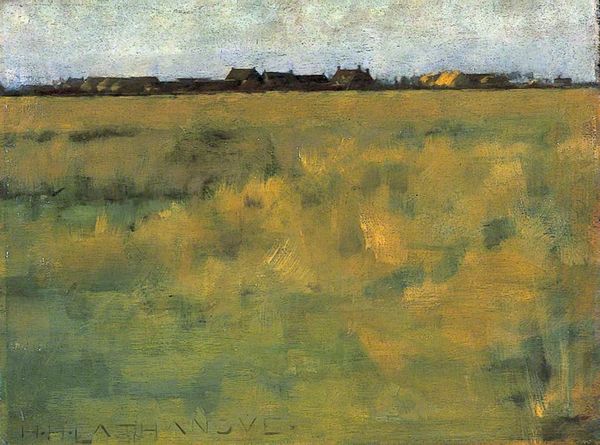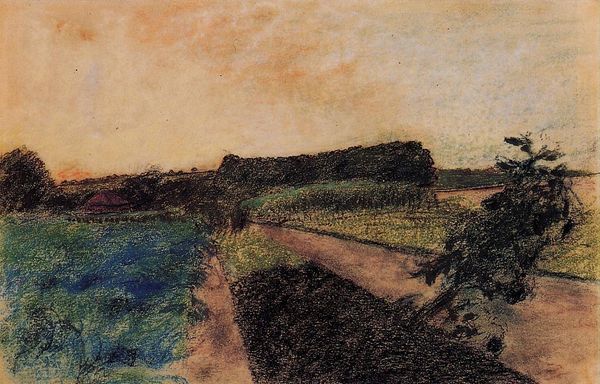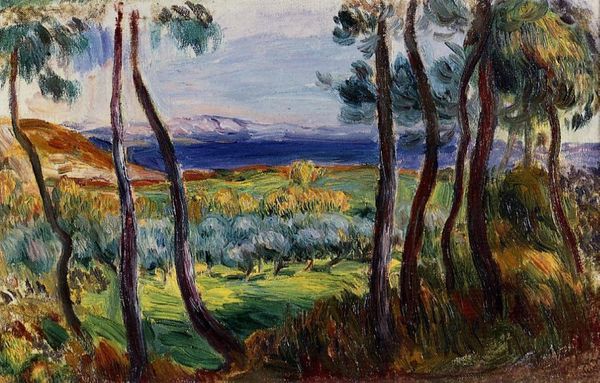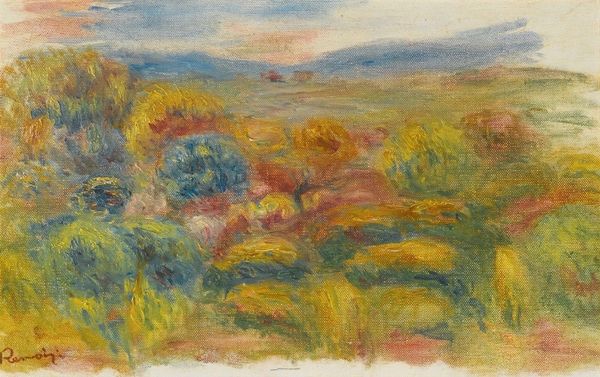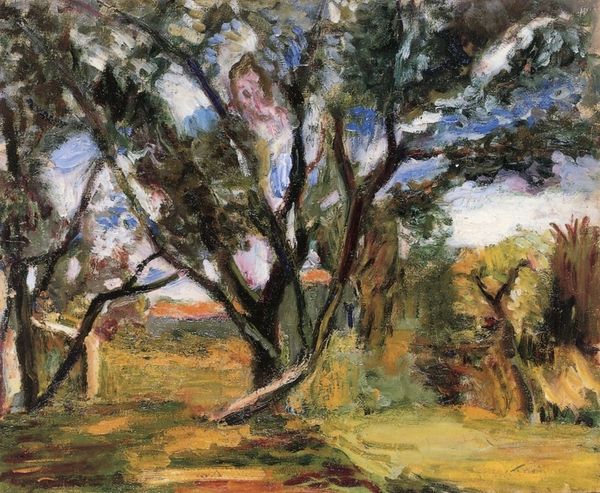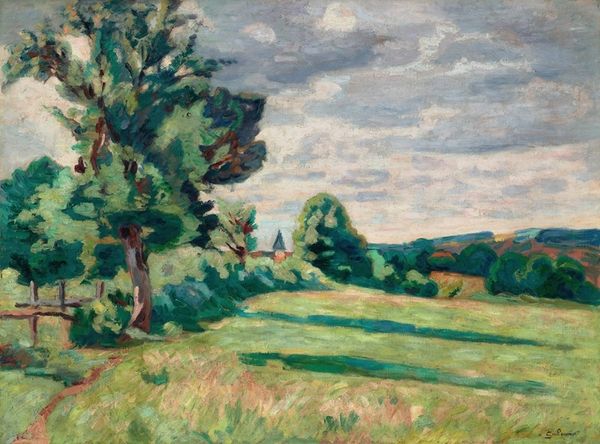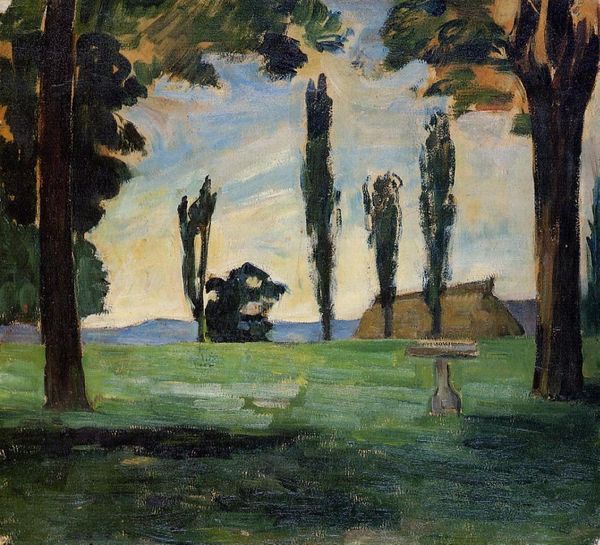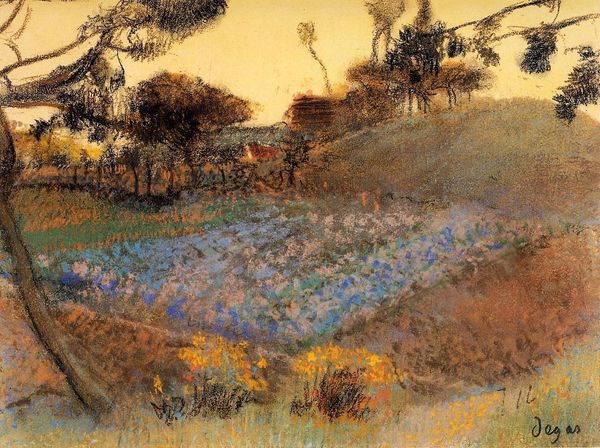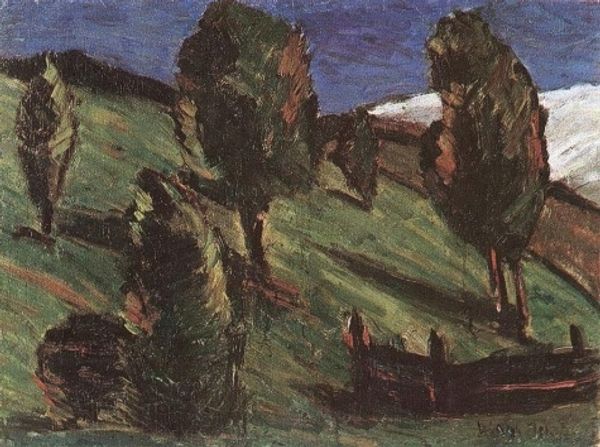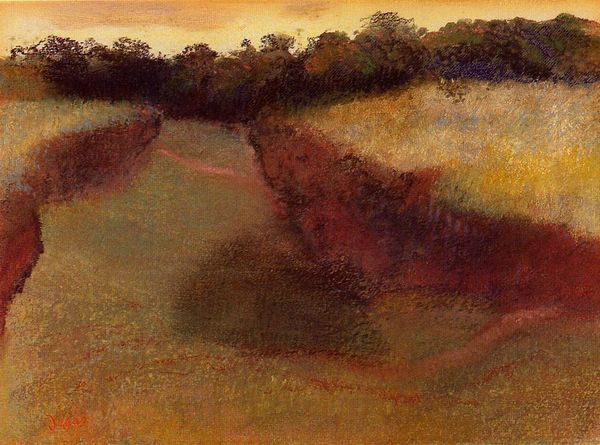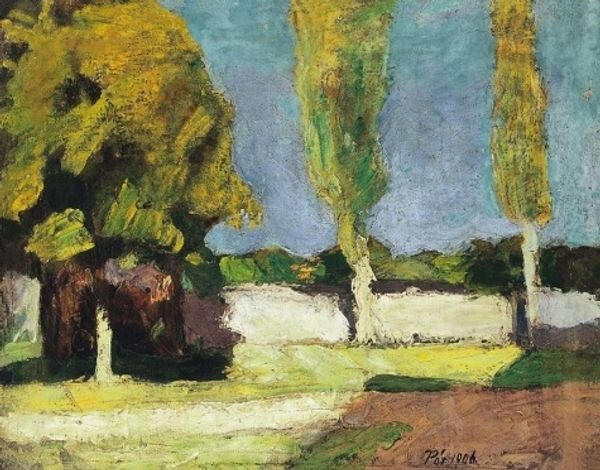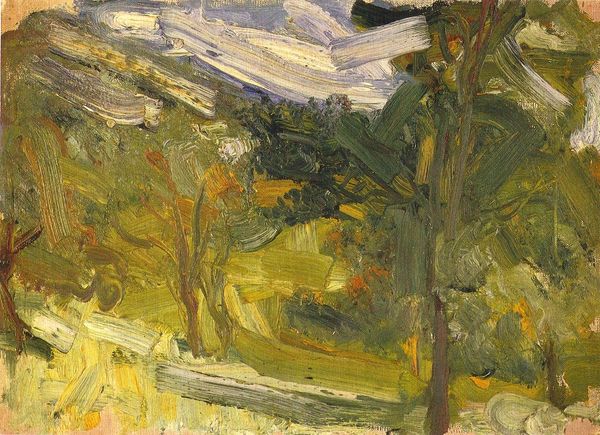
Copyright: Public domain
Curator: Istvan Nagy's 1927 painting, "Autumn in Bakony," showcases the artist's engagement with landscape through the expressive possibilities of oil paint. Editor: Immediately, I’m struck by the muted greens and yellows. It feels less like the fiery explosion of autumn and more like the melancholic exhale before winter arrives. A subdued energy, wouldn't you say? Curator: Indeed. The chromatic scale operates with subtlety, and the composition relies on simplified forms. Consider how Nagy structures the receding planes: foreground, middle ground, and distant hills. The trees punctuate the horizon with their verticality. It's almost a stage set, in a way. Editor: Absolutely! It's as if nature itself is curating an exhibit of its most tranquil features. And those minimalist trees—they almost resemble ghostly figures watching over the scene. There's a tangible sense of stillness here, like holding your breath in anticipation of something about to happen. Or perhaps just basking in a shared, silent awareness of existence. Curator: A fascinating interpretation. Formalistically, the application of paint is worth noting. Observe the visible brushstrokes. They aren’t blended to create illusionistic depth but rather exist as discrete marks, reminding us of the painting’s materiality. This highlights the constructed nature of representation. Editor: It’s less about perfectly mimicking a Bakony autumn and more about channeling its emotional resonance through deliberate marks and calculated omissions. I picture Nagy standing before this landscape, not just recording but dialoguing with it. Each stroke a whisper, a sigh, a shared secret between artist and scene. Curator: It resonates, doesn't it? A conversation between artist and landscape. By stripping away details, Nagy compels us to actively participate in constructing meaning, emphasizing the artwork's artifice. Editor: You know, engaging with a painting like this pulls us away from mere observation. You begin to feel that wistful air and see not just colors and shapes, but start piecing together the fragments of untold stories. It is like stumbling upon nature's secret journal. Curator: Quite eloquently put. Ultimately, Istvan Nagy's "Autumn in Bakony" becomes more than just a landscape. It invites us to ponder the constructed nature of perception. Editor: …and to embrace the bittersweet beauty of a season in transition, viewed through the intensely personal filter of Nagy's experience.
Comments
No comments
Be the first to comment and join the conversation on the ultimate creative platform.
